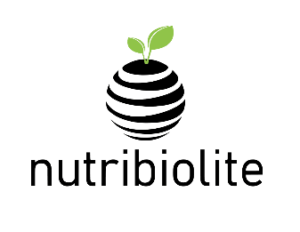
Synbiotics, a superior effect due to the combination of probiotics and prebiotics
Nowadays it is clear that nutrition has an important role not only in supplying the necessary nutrients for growth and development of the organism, but especially for the maintenance of health and prevention of diseases. In the world of highly processed food, resulting in problems such as obesity, allergies, cardiovascular diseases and cancer, particular attention is drawn to the composition and safety of consumed products. There is a myriad of scientific research, concluding that the microbiota of the human large intestine greatly influences health and well-being and pointing out the health benefits imparted by probiotics and prebiotics as well as synbiotics.1, 2, 3
The term probiotic, meaning “for life,” is derived from the Greek language. This term is used to describe a product containing viable, defined microorganisms in sufficient numbers, which alter the microflora (by implantation or colonization) in the human gastrointestinal tract creating so beneficial health effects for the organism.
Beneficial intestinal bacteria have numerous and important functions, e.g., they produce various nutrients, prevent infections and modulate a normal immunological response. Therefore, modification of the intestinal microbiota in order to achieve, restore, and maintain balance in the body and the activity of microorganisms present in the gastrointestinal tract is necessary for an improved health.
Lactobacillus acidophilus is a type of beneficial bacteria found in your intestines. Its name gives an indication of what it produces that is lactic acid. It does this by producing an enzyme called lactase. Lactase breaks down lactose, a sugar found in milk, into lactic acid. Lactobacillus acidophilus is also sometimes referred to as L. acidophilus or simply acidophilus.
L. acidophilus has been extensively studied as a probiotic, and evidence has shown that it may provide a number of health benefits. Studies suggest that certain probiotics can help reduce cholesterol levels and that L. acidophilus may be more effective than other types of probiotics to do so. 4, 5
A number of studies have shown that L. acidophilus may help prevent and reduce diarrhea that’s associated with various diseases.6 It can improve symptoms of Irritable Bowel Syndrome (IBS),7 such as bloating8 and reduce the abdominal pain.9 Another study 10 concluded that that the best way to take probiotics for IBS is to use single-strain probiotics, rather than a mix, for less than eight weeks, as well as a dose of less than 10 billion colony-forming units (CFUs) per day.
Vaginosis and vulvovaginal candidiasis are common types of vaginal infections. There is good evidence that L. acidophilus can help treat and prevent vaginal infections, such as vaginosis and vulvovaginal candidiasis.11,12 It may promote weight loss, boost the immune system and thus help reduce the risk of viral infections.
Prebiotics are known to be “non-digestible food ingredients that beneficially affects the host by selectively stimulating the growth and/or activity of one or a limited number of bacteria in the colon.” Although any food ingredient that enters the large intestine is a candidate prebiotic, it is the selectivity of the fermentation in the mixed culture environment that is critical. At present, most searches for prebiotics are directed toward the growth of lactic acid–producing microorganisms. This is due to their purported health-promoting properties.
If you’ve been reading up on gut health, then you may have heard of inulin. Inulin is a type of soluble fiber found in many plants. It is a “fructan” – meaning that it is made up of chains of fructose molecules that are linked together in a way that cannot be digested by your small intestine. It travels to the lower gut, where it functions as a prebiotic, or food source for the beneficial bacteria that live there. Your gut bacteria convert inulin and other prebiotics into short-chain fatty acids, which nourish colon cells and provide various other health benefits. Inulin is known to improve the digestive health, 13, 14 to relieve constipation, 15, 16 decrease the “hunger hormone” levels and to help with weight loss. 17, 18
In the face of widespread diseases and ageing societies, the use of knowledge on the beneficial effect of probiotic bacteria and prebiotic fibers is becoming increasingly important. The consumption of pre-processed food (fast food), often containing excessive amounts of fat and insufficient amounts of vegetables, is another factor of harmful modification of human intestinal microbiota. The health benefits imparted by probiotics and prebiotics as well as synbiotics have been the subject of extensive research in the past few decades. High potential is attributed to the simultaneous use of probiotics and prebiotics.
The term “synbiotic” is used to describe a combination of synergistically acting probiotics and prebiotics. Synbiotics have both probiotic and prebiotic properties and were created in order to overcome some possible difficulties in the survival of probiotics in the gastrointestinal tract. Therefore, an appropriate combination of both components in a single product should ensure a superior effect, compared to the activity of the probiotic or prebiotic alone. 19

